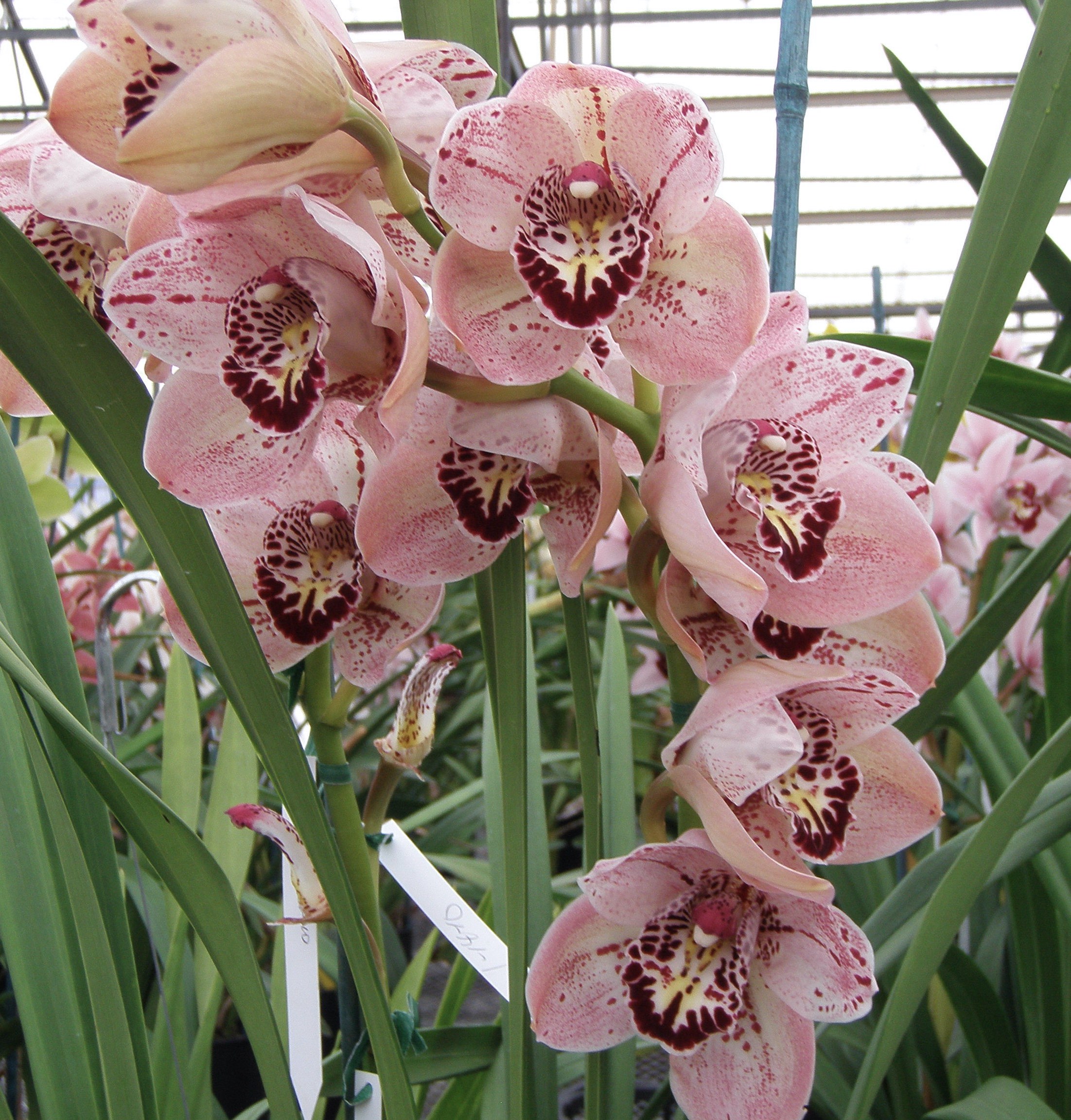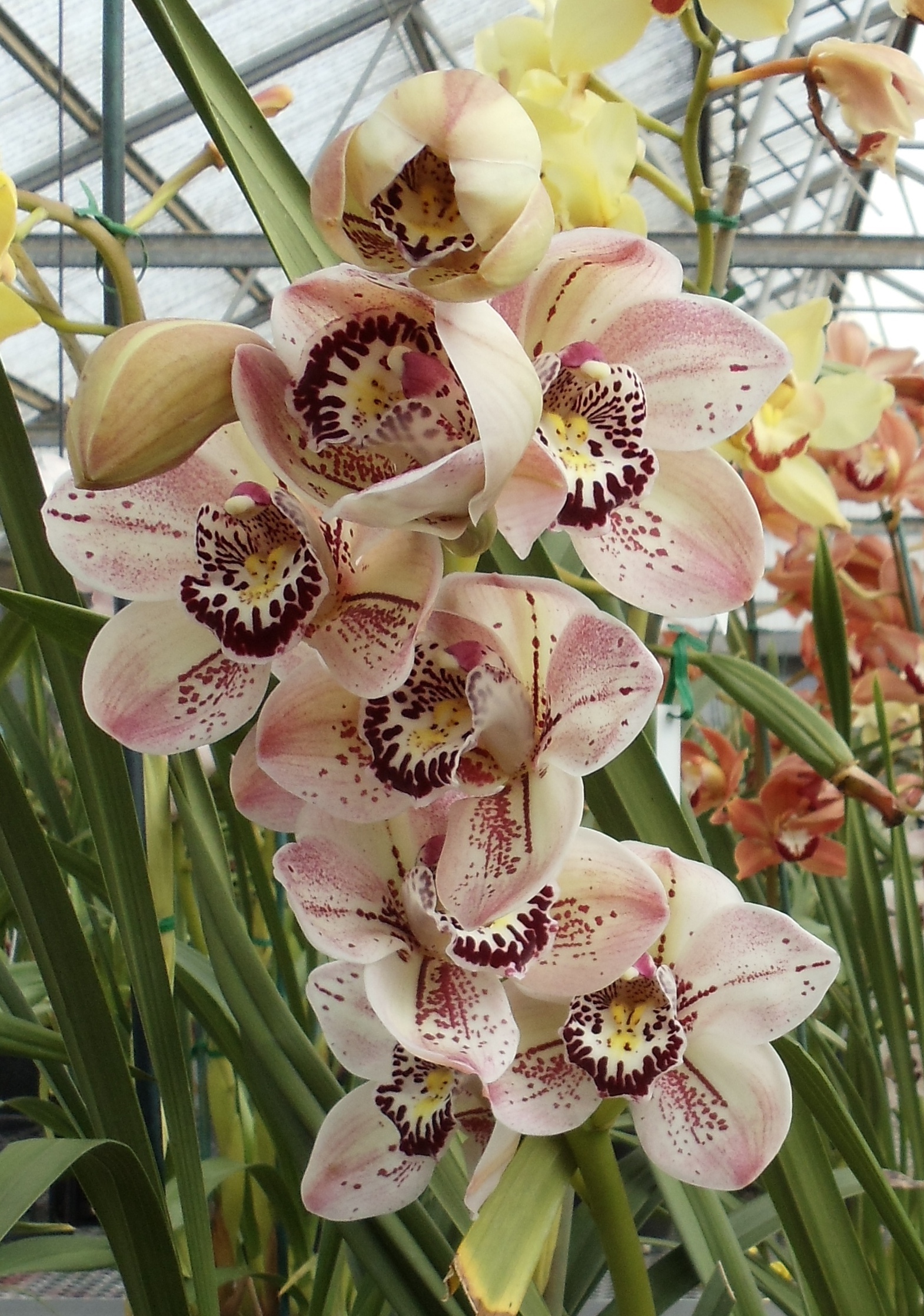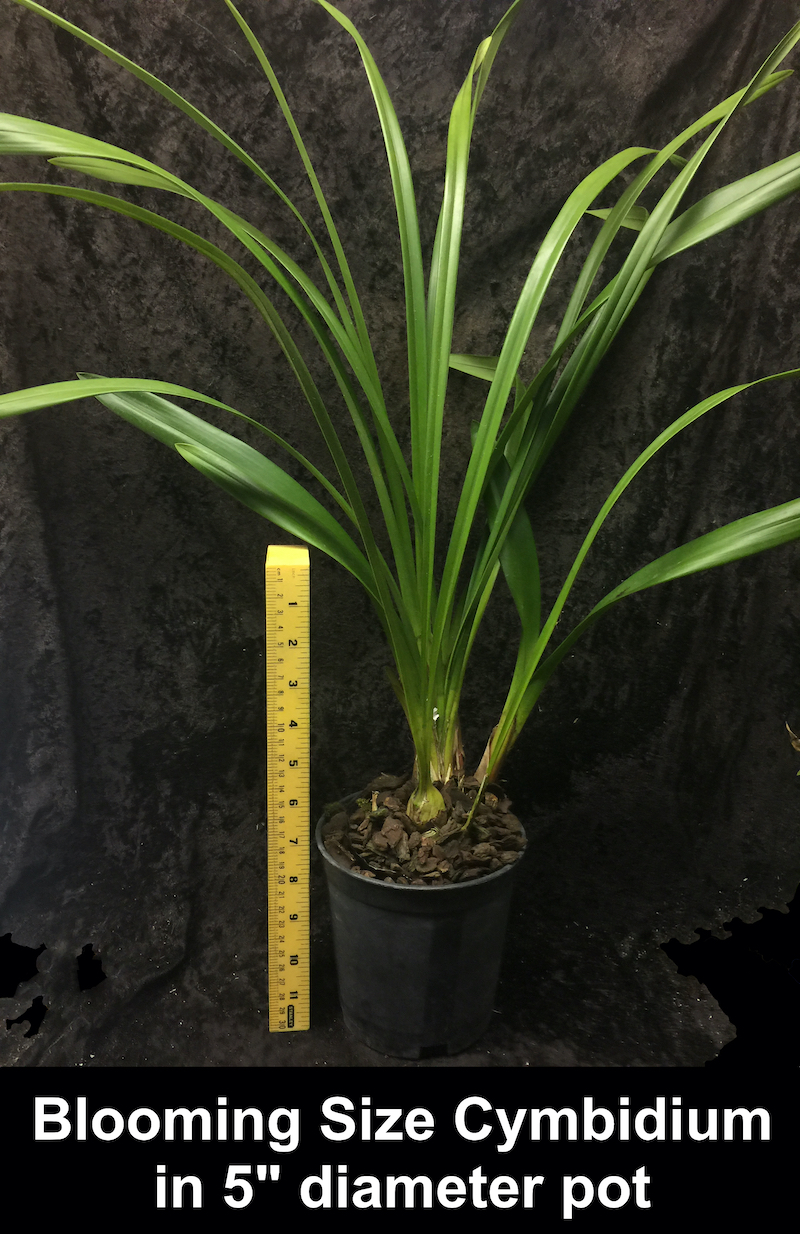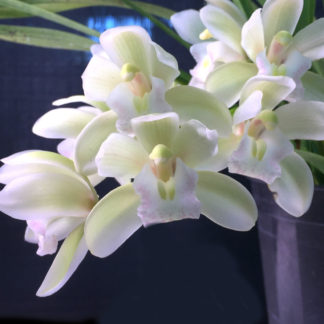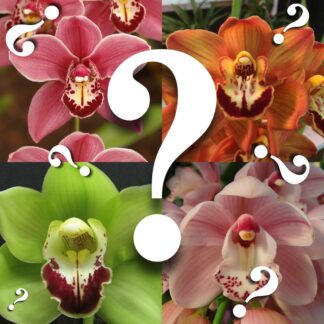Description
IMPORTANT NOTE: these plants are NOT IN BUD/BLOOM when shipped. PLEASE look at all the pictures in this listing so you know the condition/size of plant you’ll be getting.
Cymbidium Mem. Anna Leong
The flowers of this orchid (and the following description) will teach you to look at orchid blooms in a completely different way.
One thing that you don’t often see on Cymbidium blooms are spots. If you look closely at orchid flowers that have stripes or spots, you’ll notice that there is some kind of underlying organization, that the spots and lines are not purely random. You can catch a glimpse of a kind of radial geometry emanating from the center of the plant, with lines (sometimes very faint) radiating out from the center, and usually the spots track thesee lines to some degree. What you’re seeing with the spots and lines is the genetic organization of pigmentation that has been disrupted by human breeding efforts selecting for some pleasing or interesting effect. It’s quite analogous to how pigeon or chicken breeders develop interesting and sometimes bizarre patterns of feathers and colors. With orchids, species in nature tend to have flowers that appear more controlled in their appearance; breeders, however, harness nature’s genetic palette by select for desirable results, such as saturation of colors, patterns, and spots, and repeat the breeding cycle.
Lines on orchid flowers tend to be not as desirable, and since breeders often breed for market tastes, you don’t see lines on orchid blooms too often. Maybe lines make the orchids too geometric rather than natural, too engineered and lacking in spontaneity. The reality is that geometry pervades everything in nature, and orchid breeding is simply the crudest (but oldest) form of genetic engineering. But even if you don’t see them, he lines in the flowers are still there, and like magnetic field lines, you can detect them under the right conditions.
Which brings us, finally, to Cym. Mem. Anna Leong… This is a big, bold Cymbidium, and in its flowers you can see evidence of the radial flower lines, because the spots ride right on top! What is happening is that the cells forming the radial lines are expressing pigments, but in certain areas along the lines, some clumps of cells are expressing more pigment — that’s why you get spots. In some orchid blooms, the radial lines aren’t visible, but spots are (and seem randomly spaced). The reality is that the cells comprising the radial lines are ALWAYS present, but in some plants the lines don’t express pigment, and in flowers with spots, you’re seeing a de-linking of genetic control mechanisms having to do with expression of pigments. So that’s a glimpse of the underlying genetic architecture of flower pigment patterning!
The lines and spots come together with great effect in Mem. Anna Leong, as the blooms are bold and beautiful, and have a mild fragrance. These are large, vigorous plants that are easy to grow, and a well-grown plant can produce multiple flower spikes with numerous blooms.
ABOUT CYMBIDIUMS AND WHY THEY’RE GREAT
Cymbidium orchids are one of the most popular orchid types grown in the world.
Many excellent qualities make them favorites in the flower world:
COLORFUL FLOWERS — Breeders have done an excellent job producing an incredible variety of colors. Colors, spots, splashes: cymbidium blooms have them all.
SHOWY FLOWER SPIKES — Some types hold their spikes erect with big, round flowers and others produce pendulous spikes with graceful arching flowers.
LOTS OF FLOWERS — Some varieties can have 30+ flowers on a single spike! Most modern hybrids have at least ten.
LONG-LASTING BLOOMS — Many modern Cymbidium blooms stay open for two months (or more!).
EASY TO GROW — I usually recommend using reverse osmosis/rainwater/distilled water on orchids when possible, but Cymbidiums don’t seem to need it. They grow outside in non-freezing zones and are used as landscape plants and get the same water as all the other plants. (Of course, using RO/rainwater/distilled doesn’t hurt!)
EASY TO BLOOM — Cymbidiums are not fussy about blooming. They bloom regularly year after year, unlike a lot of other orchids who take up room and board but don’t bloom or do much else! Sort of like kids these days.
HARDY — A mature Cymbidium is a beast of plant. Big, tough bulbs, and thick, stiff leaves make them tough plants that can handle a lot. No shrinking violets, these!
HOW TO GROW THIS CYMBIDIUM
Cymbidium orchids are among the easiest orchids to grow. They grow well in chunky orchid bark (fir bark typically), or thoroughly rinsed coconut husk. Avoid overpotting (i.e., putting the plant in a pot that is too big) — select a pot that is not too snug but also leaves room for growth. Make sure your pot has drainage holes at the bottom. Water twice per week, and fertilize lightly every week or so with any balanced fertilizer. For smaller plants, avoid frost; larger plants can handle near freezing temperatures, but do not leave outside if you grow in an area that gets snow. For blooming size plants (usually three growths/bulbs), allow the plant to experience cooler temperatures (in the 40s F) to set the bud the following season. Larger plants can handle bright light, but younger plants should be grown in bright shade or allowed to receive diffuse light.
